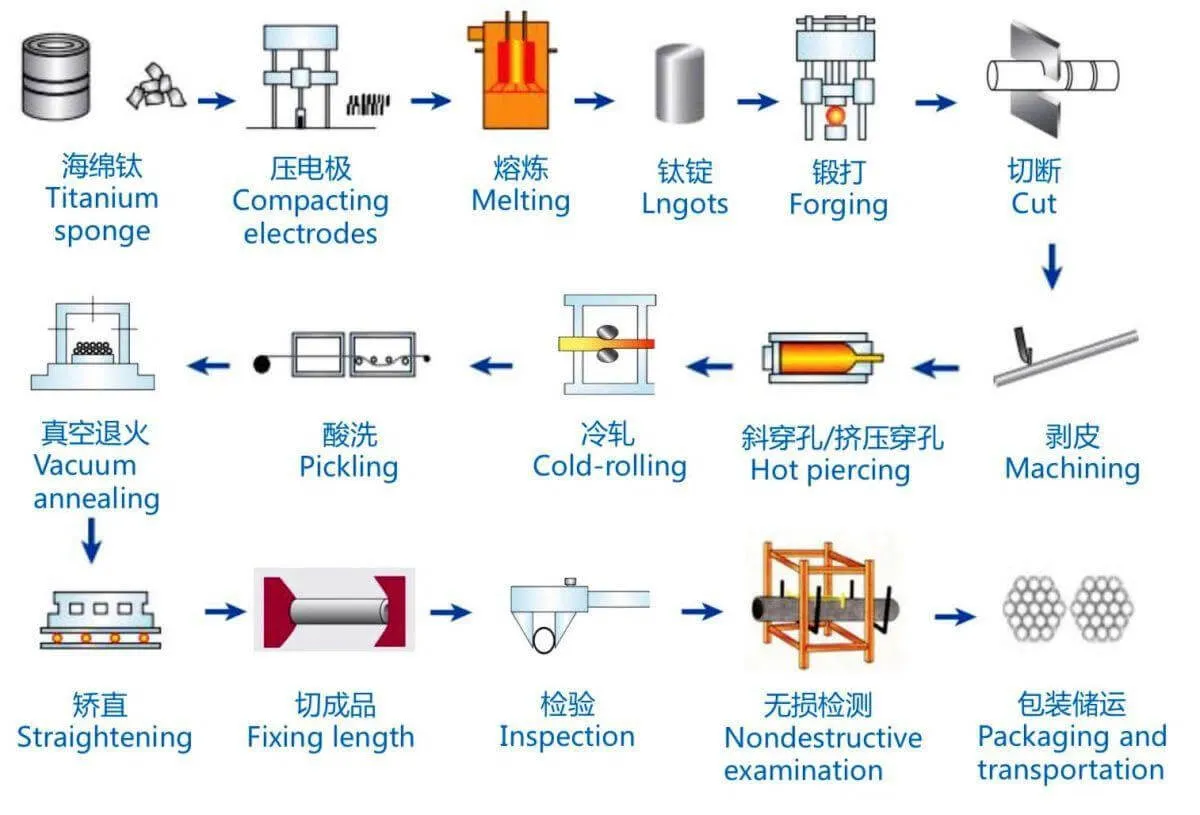
1. Raw Material Selection and Inspection
Select titanium billet (e.g. ASTM B348, Gr2, Gr5)
Perform chemical composition analysis
UT (Ultrasonic Testing) to ensure internal integrity
2. Billet Cutting
Cut billet into disc-appropriate lengths using band saw or abrasive saw
Control cutting length and weight based on final disc size
3. Heating
Heat billet in furnace to 850°C–950°C depending on titanium grade
Uniform heating to avoid cracking or coarse grain
4. Open Die Forging into Disc
Use hydraulic press or hammer to forge billet into flat disc
Multiple hits with controlled deformation
Ensure center consolidation and outer grain flow
5. Annealing (Optional)
Heat treatment to refine grain structure and relieve stress
Typical: 700–800°C in air or vacuum furnace
6. Rough Machining (Facing & Turning)
Remove forging scale and unevenness
Machine to near-net shape, preparing for final tolerance
7. Nondestructive Testing (NDT)
Ultrasonic Testing (UT)–ASTM A388
Liquid Penetrant Testing (PT)–ASTM E165
Visual, dimensional, and flatness check
8. Finish Machining (Optional)
CNC or lathe machining to required OD/thickness/flatness
Surface finish up to Ra≤3.2μm if specified
9. Inspection & Certification
Full dimensional report
Mechanical & chemical test reports
EN10204 3.1 / 3.2 material certificates
10. Packaging
Anti-rust oil, plastic wrap
Plywood case with labeling
Export-standard packaging
